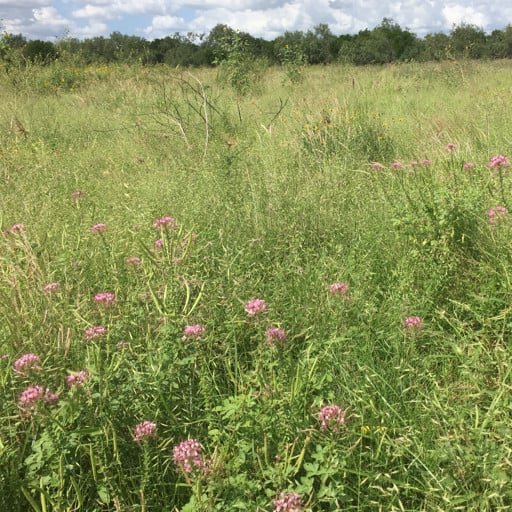ZAPATA RIO GRANDE CLAMMYWEED
Short Description:
Zapata Rio Grande Clammyweed is a composite of collections from Dimmit and Zapata counties of South Texas. Rio Grande Clammyweed produces pink flowers and copious seed from March through November. Its flowers attract a wide array of pollinating insects and butterflies, and the seeds are an excellent feed source for birds, including mourning doves and bobwhite quail. Clammyweed is one of the easiest to establish native wildflowers or food plot plants, and its drought tolerance, long bloom period, ability to withstand grazing by deer and livestock, and copious flower and seed production make it a great species for a variety of applications. Recommended uses of Rio Grande Clammyweed include for game bird food plots, pollinator plantings, roadside beautification, and as component of wildflower, erosion control, and range and wildlife habitat restoration seed mixes. Please call to place an order (210) 661-4191. Our Texas Natives are certified “Selected Texas Native Germplasm” by the Texas Department of Agriculture. Each variety is of a specific ecotype of its species that was locally sourced from counties in Texas.
All payments are final and no refunds will be processed.
All orders are processed within 2-3 business days.
View Our Terms and Conditions
Description
Rio Grande Clammyweed is a native, warm season annual forb that grows to 3’ in height with showy pink flowers. Clammyweed is well adapted to most soils in south, central, and west Texas, and can be used in butterfly and pollinator gardens throughout the south. Clammyweed is not grazed by livestock or wildlife, making it a suitable reclamation species for disturbed areas where livestock cannot be excluded. Clammyweed is a highly preferred food source for mourning doves and bobwhite quail when available, and it is also one of the most attractive pollinator plants available. In one trial near Kingsville, Texas, over 50 butterfly species were documented as utilizing the species during summer. Recommended uses of Rio Grande Clammyweed include for game bird food plots, pollinator plantings, roadside beautification, and as component of wildflower, erosion control, and range and wildlife habitat restoration seed mixes.
Zapata Rio Grande Clammyweed is a composite of collections from Dimmit and Zapata counties developed by the Texas Native Seed Program and the USDA NRCS South Texas Plant Materials Center. Clammyweed is easily established from seed, and it is one of the few native plants that will often emerge and establish without rainfall if soil moisture conditions are favorable at planting. This species is naturally endemic to Texas.
Planting: Plant in early spring or late summer-early fall a a rate of 5-8 lbs. pure live seed (PLS) per acre at 1/8 to 1/4 inch deep. For dove food plots, plant 5 lbs per acre by July 1 for September maturity. Plants will continue to produce seed until frost with adequate moisture if left standing.
For more information:
Zapata Rio Grande Clammyweed Brochure from USDA NRCS
Zapata Rio Grande Clammyweed Brochure from Texas Native Seeds Program
Soil
Sandy, gravelly, and alluvial silty soils
Height
2-5 feet
Type
Warm Season Annual
Region
Rio Grande Plains, Gulf Coast Prairies and Marshes, South Texas Sand Sheet, and butterfly gardens in Texas and adjacent regions























